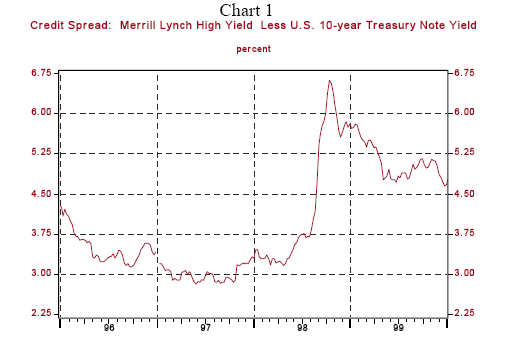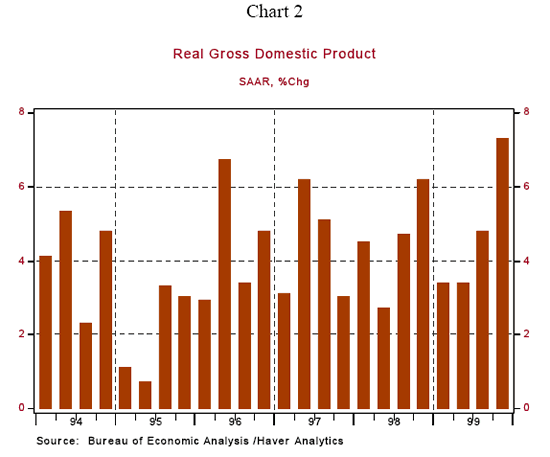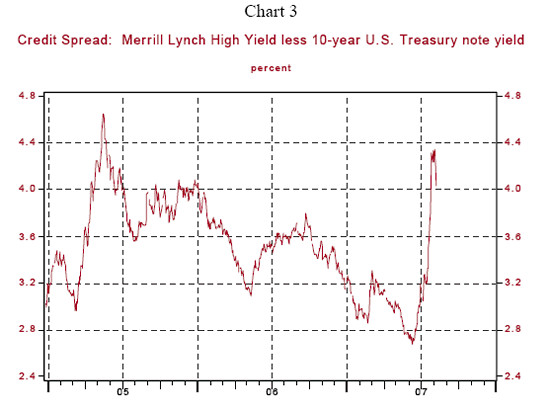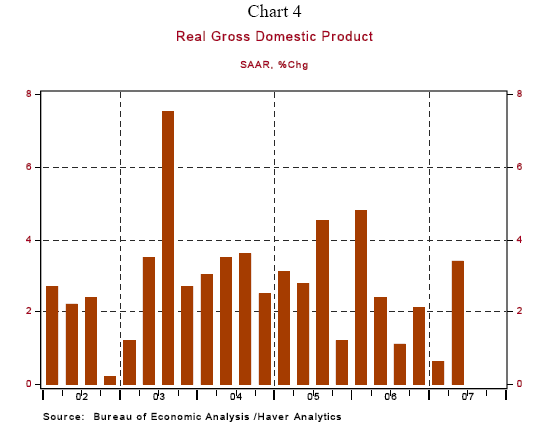What the Fed Did in 1998 and What is Different Now
Stock-Markets / Credit Crunch Aug 14, 2007 - 01:35 AM GMTBy: John_Mauldin
 This week in Outside the Box we take look at the how the Fed acted in the last debt crisis of 1998 and what they are likely to do this time. How will the Fed address the looming liquidity crisis stemming from the subprime debacle primarily, and from the abused Yen carry-trade, lax lending practices, and excess liquidity, generally? Asha Bangalore, Vice President and Economist at the Northern Trust Company, believes that given the actions taken by the European and Japanese banks in response to credit and liquidity concerns in the markets by an infusion of €200 Billion, and ¥600 Billion, respectively, the Fed will also take the customary action of cutting interest rates to assuage the market at the October 30-31 Fed meeting.
This week in Outside the Box we take look at the how the Fed acted in the last debt crisis of 1998 and what they are likely to do this time. How will the Fed address the looming liquidity crisis stemming from the subprime debacle primarily, and from the abused Yen carry-trade, lax lending practices, and excess liquidity, generally? Asha Bangalore, Vice President and Economist at the Northern Trust Company, believes that given the actions taken by the European and Japanese banks in response to credit and liquidity concerns in the markets by an infusion of €200 Billion, and ¥600 Billion, respectively, the Fed will also take the customary action of cutting interest rates to assuage the market at the October 30-31 Fed meeting.
Your humble analyst believes that a rate cut will not likely occur on account of inflation concerns, and I thought you should read an opposing and well-reasoned view. As an aside this makes the CPI numbers which will be released this Wednesday very important and any difference from the expectations will have the tendency to move the markets significantly. If inflation comes in high as it did last month, the market will take that as a sign that the Fed will have less room to cut rates. Conversely, if inflation is lower than expected, you could see a real leap. As a reference, the previous CPI (MoM) was .2%, with economists estimating it coming in at .1%, CPI Ex. Food & Energy (MoM) was .2% with no estimated change forecasted.
John Mauldin, Editor
What the Fed Did in 1998 and What is Different Now
by Asha Bangalore
Northern Trust Global Economic Research
There have been two major events during the week -- the FOMC meeting and the global liquidity crisis. Starting with the FOMC meeting, the Fed left the federal funds rate unchanged at 5.25% on August 7 as expected. The policy statement acknowledged the turmoil in credit markets but abstained from hints about the next move. The FOMC continued to present inflation as the predominant risk but at the same time noted that "downside risks of economic growth" have risen.
Our most likely scenario with regard to the federal funds rate has not changed. We continue to predict that the next move is a lower federal funds rate at the October 30-31 FOMC meeting. Incoming economic data such as the July employment report, declining auto sales, and soft consumer spending are early signs of weakening economic conditions. Economic conditions per se have not deteriorated substantially to bring about an emergency action from the Fed but there is a small chance the global liquidity crisis will translate into an emergency federal funds rate cut.
Moving on to the global liquidity crisis, central banks have taken appropriate action to provide liquidity to financial markets in the last two days of this week. The wide reach of the subprime mortgage turmoil in the U.S. was visible on August 9 when three hedge funds of a French bank had problems and triggered a liquidity crisis.
The European Central Bank put out this small fire by providing funding of over $200 billion to ensure adequate liquidity in the financial system and it issued a formal announcement indicating that it stands by to provide funding at the current policy rate. The Federal Reserve's participation was comparatively small on August 9 and it made a formal announcement on August 10 noting that it stands willing to provide funds through its discount window.
Historically, the Fed has lowered the federal funds rate for economic-growth reasons and to manage financial market crises, which could spillover into economic activity. The 1998 Long Term Capital Management bail out is the most recent crisis when the Fed lowered the federal funds rate to prevent instability in global financial markets. At this time, credit spreads widened sharply. The yield spread between junk bonds and the 10-year U.S. Treasury note shot up around 200bps in a short span (see chart 1).

This credit spread rose from 469 basis points in the last week of August 1998 to 661 basis points in the week ended October 16. The Fed lowered the federal funds rate 25 bps to 5.25% on September 29, 1998 at the regularly scheduled FOMC meeting citing that "the action was taken to cushion the effects on prospective economic growth in the United States of increasing weakness in foreign economies and of less accommodative financial conditions domestically." The Fed cut the federal funds rate once again on October 15, 1998, an unscheduled event, to 5.00% indicating that "growing caution by lenders and unsettled conditions in financial markets more generally are likely to be restraining aggregate demand in the future.
Against this backdrop, further easing of the stance of monetary policy was judged to be warranted to sustain economic growth in the context of contained inflation." The Fed eased monetary policy conditions once more by cutting the federal funds rate another 25 bps cut to 4.75% at a scheduled FOMC meeting on November 17, 1998. The FOMC statement after this rate cut read as follows: "Although conditions in financial markets have settled down materially since mid-October, unusual strains remain. With the 75 basis point decline in the federal funds rate since September, financial conditions can reasonably be expected to be consistent with fostering sustained economic expansion while keeping inflationary pressures subdued." Following the 75 bps cut in the federal funds rate, the Fed held the funds rate unchanged until June 30, 1999, when it raised the federal funds rate to 5.00%. Of importance to note at this juncture is that the economy was growing at a robust clip with no imminent threat to economic growth
(see chart 2).

Fast forwarding to the present time, credit market spreads have widened in the past few days. The yield spread between junk bonds and the 10-year U.S. Treasury note has risen from 326 bps on July 10 to 403 bps on August 8 (see chart 3). There is a liquidity problem at hand that central banks are addressing in an appropriate manner.

However, there is a major difference in the economic situation in 2007 compared with 1998. The economy has grown below potential for four quarters with temporary factors providing a boost to economic growth in the second quarter of 2007. We expect the economy to grow at a 1-1/2% pace in the second half of 2007. The market consensus is for slowing economic conditions in the rest of 2007 compared with a 3.4% increase in the second quarter. In addition, households are financially strapped to maintain consumer spending, early signs of which were seen in the anemic 1.3% annualized increase in consumer spending in the second quarter. The housing market recovery is not visible on the horizon and business capital spending is unlikely to add significantly to GDP. This leaves government spending and exports to offset weakness in the other sectors.
Economic growth in the rest of the major economies is impressive but their respective central banks are tightening, which is not supportive of strong growth in exports of the U.S. economy. In other words, betting even for a moderate expansion in business activity in the U.S. is far fetched.

Considering the difference in economic circumstances in 2007 and 1998, the Fed is in a tough spot to maintain economic growth at the current federal funds rate.
The Fed response, whatever it may be, will be indicative of how Bernanke and company view their role. Will we get a Bernanke put or a return to a more orderly business cycle without the encouragement to constantly take on more risk, knowing the Fed will come to the rescue if there is a problem. Stay tuned.
Your perplexed by the current market conundrum analyst,
By John Mauldin
http://www.investorsinsight.com
To subscribe to John Mauldin's E-Letter please click here: http://www.frontlinethoughts.com/subscribe.asp
Copyright 2007 John Mauldin. All Rights Reserved
John Mauldin is president of Millennium Wave Advisors, LLC, a registered investment advisor. All material presented herein is believed to be reliable but we cannot attest to its accuracy. Investment recommendations may change and readers are urged to check with their investment counselors before making any investment decisions. Opinions expressed in these reports may change without prior notice. John Mauldin and/or the staff at Millennium Wave Advisors, LLC may or may not have investments in any funds cited above. Mauldin can be reached at 800-829-7273.
Disclaimer PAST RESULTS ARE NOT INDICATIVE OF FUTURE RESULTS. THERE IS RISK OF LOSS AS WELL AS THE OPPORTUNITY FOR GAIN WHEN INVESTING IN MANAGED FUNDS. WHEN CONSIDERING ALTERNATIVE INVESTMENTS, INCLUDING HEDGE FUNDS, YOU SHOULD CONSIDER VARIOUS RISKS INCLUDING THE FACT THAT SOME PRODUCTS: OFTEN ENGAGE IN LEVERAGING AND OTHER SPECULATIVE INVESTMENT PRACTICES THAT MAY INCREASE THE RISK OF INVESTMENT LOSS, CAN BE ILLIQUID, ARE NOT REQUIRED TO PROVIDE PERIODIC PRICING OR VALUATION INFORMATION TO INVESTORS, MAY INVOLVE COMPLEX TAX STRUCTURES AND DELAYS IN DISTRIBUTING IMPORTANT TAX INFORMATION, ARE NOT SUBJECT TO THE SAME REGULATORY REQUIREMENTS AS MUTUAL FUNDS, OFTEN CHARGE HIGH FEES, AND IN MANY CASES THE UNDERLYING INVESTMENTS ARE NOT TRANSPARENT AND ARE KNOWN ONLY TO THE INVESTMENT MANAGER.
John Mauldin Archive |
© 2005-2022 http://www.MarketOracle.co.uk - The Market Oracle is a FREE Daily Financial Markets Analysis & Forecasting online publication.


